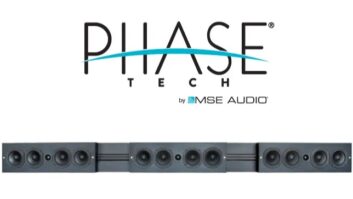Tokyo – As it has
done at industry venues all year, 3D TV technologies of various forms is
stealing the spotlight at this week’s 2010 CEATEC Show here.
While early
entrants into the field, such as Panasonic and Sony, showed an assortment of
recently announced new technologies for the consumer, including everything from
new 3D-capable displays to cameras and camcorders with 3D functionality,
several newcomers began showing their own spins on the new home entertainment
revolution.
Meanwhile, several
large Japanese-based CE makers with larger businesses in the U.S. also expanded
the field of iPad-like tablet PCs designed to do everything from displaying
e-books to running various Android-based apps.
The following is a
look at some of the items on display here this week:
Three-quarters of
Panasonic’s booth here was devoted to eco-friendly technologies under
development to help reduce the world’s carbon footprint. Key areas of focus included
home power, storage and maintenance through solar panels, fuel cells, large
lithium-ion battery power collectors for the home and car, and smart energy-management
systems.
Toshiba demonstrated
three 3D TVs that viewers can watch without the need for special glasses.
All three are based
on LCD technology and are capable of delivering high-resolution 3D images when
viewed from a position in the center of the screen with about a 40 percent
sweet spot.
The company
demonstrated a pair of models slated for domestic introduction this December in
the 20- and 32-inch screen sizes. The latter incorporates Toshiba’s powerful
and pricey Cell processor with broadband capability. The 12-inch was said to use
an alternative Cell processing technology to hit a somewhat more aggressive
price point of $1442 (120,000 yen). The 20-inch model is expected to carry a
$2,883 (240,000 yen) estimated retail, the company said.
Toshiba also
showed a 56-inch prototype with no introduction date to announce at this time.
The company could
not say if it plans to bring the technology to the U.S. market.
The 12-inch and
20-inch models are said to use an integral imaging system and perpendicular
lenticular sheet to display smooth, natural images. This, along with Toshiba’s
processing technology, creates 3D images from nine parallax images of the
original content.
In addition, the
TV can convert 2D images into 3D.
The 20-inch unit
integrates a high-def LED backlit LCD panel specially designed for 3D without
the need for glasses, Toshiba said. It is said to have four times the pixels of
a standard FullHD panel.
While images appeared
to be bright with high resolution, a slight tilt of the head to either the left
or right did cause images to appear to double somewhat, perhaps a sign that the
technology may ultimately be best suited to personal viewing applications. The
sets are said to have about a 40 degree sweet spot in the center of the screen.
Still, Toshiba
expects the need to wear expensive 3-D glasses to be a sales deterrent to many
viewers, and by eliminating them, they could potentially open the 3D at home market
further.
Toshiba gave show
attendees a glimpse of its tablet PC called the BookPlace, which the company has
positioned in the European market as an Android-based e-book device.
It is capable of
A/V applications, features a 10.1-inch (1,024 by 600-pixel) LCD screen, has an
embedded camera and is priced at 399 euros. The company is still studying plans
for the U.S. and Japan.
Sharp offered its
spin on glasses-free 3D LCD TV with a pair of prototype models in the 3.8- and
10.6-inch screen sizes.
The 3.8-inch model
was shown in use as a possible smartphone application, although exact release
plans were not disclosed. The viewing angle becomes less of an issue in
handheld applications because the viewer has the ability to keep with the
central viewing position at all times, and not forced off to the left or right
sides as they might be when viewing larger screens in a group seating
situation.
Sharp also
unveiled what it is calling an XMDF next-generation e-book format, although the
application seemed to more closely resemble an Android-based tablet PC. The
company will enter the market in Japan this December with two versions, one
billed as a mobile application with a 5.5-inch screen and a larger version with
a 10.8-inch screen (1,024 by 600 pixels).
A spokesperson
said Sharp will study releasing the Galapagos in other international markets
later.
The LCD
touchscreen devices are capable of playing video and audio content, in addition
to text, still images and running Android-based apps. The next-generation XMDF
core technology will provide a digital platform to promote an e-book
distribution service and launch compatible reader devices, Sharp said.
The company is
working with various publishing houses (newspaper, magazines, catalogs),
printing and agent companies in Japan and overseas to market its e-book
business. In Japan, it has arranged to work with online-based e-book retailer
Tsutaya.
The
next-generation XMDF used in the product is a version of the current XMDF
format, which was introduced in 2001 and is used for e-book contents including
Japanese novels and manga comics.
It is said to enable
adjustment of the layout to match and meet publishers’ needs. XMDF allows users
to browse the same content on multiple terminals including smart phones, PCs
and TVs and also streamlines publisher’s e-book contents production, Sharp said.
In addition to its
laser-based 3D DLP technology, Mitsubishi Electric showed that it will soon be
in the 3D LCD TV market in Japan, with
three models in the 55-, 46- and 40-inch screen sizes. No plans were available
for any U.S. introductory plans.
The sets feature
LED edgelighting, 240Hz refresh rates, FullHD resolution, and four levels of
selectable 3D depth adjustment to boost or dial back the degree of the 3D
effect.













